반응기 온도 제어
완벽한 온도 제어 솔루션을 위해 지금 바로 문의하세요.
The reactor is the main reaction equipment in the chemical synthesis API industry. The volume of the reactor is generally 0.5m³ ~ 8m³, and its production mode is mostly intermittent production. A variety of organic reactions are involved in the drug synthesis process. These reactions can be divided into endothermic reactions and exothermic reactions. The exothermic reactions can be divided into instant exothermic reactions, fast exothermic reactions and slow exothermic reactions. Maintain the reaction. Stable process temperature is an important prerequisite for ensuring reaction safety, product quality, and high yield.
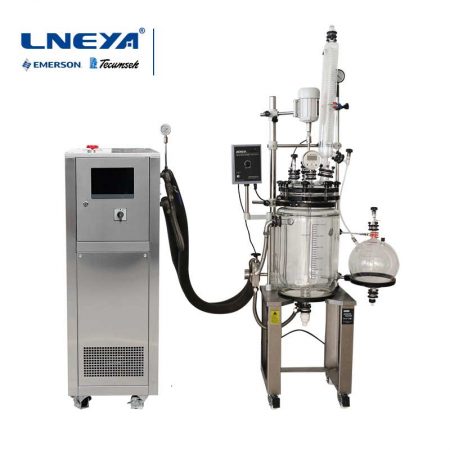
The temperature control process of the batch reactor is mainly divided into the following stages:
1. Early stage of reaction: raise or lower the temperature to the required reaction temperature.
2. Reaction process: Generally, it is a constant temperature reaction, which keeps the reaction temperature constant at a certain set value. For a multifunctional intermittent reactor, the reactions carried out are different each time, so the heat needs to be removed or supplied. Uncertainty. In order to meet the reaction needs, the temperature control requirements of this process need to be fully considered. If the temperature control is unstable, it will easily lead to a decrease in the yield and quality of the product. What’s more, it may lead to local over-temperature reactions and cause safety accidents. Therefore, whether the temperature control is stable at this stage is crucial to the safety of the reaction and the quality of the product.
3. End of reaction: Generally, it is also necessary to cool down or raise the temperature to a specified temperature. In the production process, there are strict time regulations for the intermittent reactor from the beginning of heating to the final cooling. It is generally required to conduct the reaction system according to a certain rising/lowering rate. Temperature raising/lowering operation has high requirements on the calculation of heat transfer in intermittent reactors and the selection of temperature control methods.
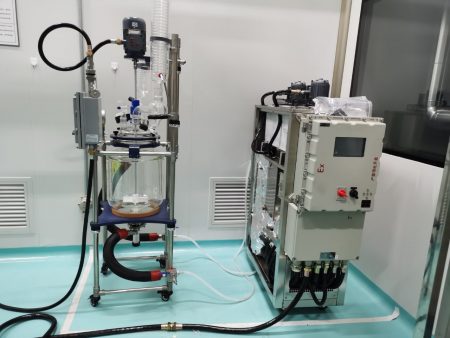
Future Prospects for Reactor Temperature Control Systems
1. Although a single TCU system has high temperature control accuracy for slow exothermic reactions, it is large in size and high in cost. Hybrid control systems have the characteristics of high flexibility, high temperature control accuracy, low cost, and good integration, and are gradually becoming mainstream.
2. Develop an intelligent temperature control system: The existing temperature control system only requires the operator to input the temperature control requirements and then the control system controls the temperature according to the input requirements. For some slow reactions, this mode can still cope with it, but for some Fast response cannot achieve good results. The reason is that the control process only controls it simply in the dimension of the control principle. At most, some complex control strategies such as cascade control, split-range control, etc. are added. There is no integration of control, process, and equipment. Come together organically.
3. Future intelligent temperature control systems should also include the following modules
① Equipment expert system: includes heat and mass transfer characteristics of different stirrings, heat transfer characteristics of reactor walls, reactor characteristics database, etc.;
② Process reaction exotherm expert system: includes exothermic curve databases for different reaction types, reaction exothermic curve databases for different products, heat transfer databases for different solvents, etc.;
③ Automatic control strategy selection expert system: includes selection guides for various control strategies for intermittent reactions, system identification systems, etc.
The above three systems + hardware together form an intelligent temperature control system. The operator only needs to select the reaction type, reaction medium, etc., and the system will select the appropriate control strategy based on the input reaction conditions and the current equipment conditions, and perform system identification in real time. Adjust the control strategy to achieve self-identification and self-adaptation of the temperature control system to achieve precise temperature control.
완벽한 온도 제어 시스템 설계 및 제조를 제공합니다. 표준 모델부터 완벽한 맞춤형 제품까지 900 . 당사는 고객 서비스를 전문으로 하며 각 고객이 특정 요구에 맞는 최적의 온도 제어 시스템을 갖출 수 있도록 최선을 다하고 있습니다.
비표준 맞춤형 솔루션을 제공합니다. 단일 냉각 냉각기와 냉각 및 난방 콤보 장치를 모두 사용할 수 있습니다.
이메일: lilia@lneya.com WeChat ID: +8615251628237 WhatsApp: +86 17851209193


냉난방 시스템(SUNDI 시리즈)
- 온도 범위: -120℃ ~ +350℃
- 고정밀, 지능형 온도 제어
- 냉각 용량: 0.5kW ~ 1200kW
- 열 유체의 수명을 연장하는 완전 밀폐형 시스템
- 각 장치는 12시간 이상 부하 테스트를 거칩니다.
| 온도 범위 | -10 ~ +150°C 시리즈 | -25 ~ +200°C 시리즈 | -25 ~ +300°C 시리즈 | -45 ~ +250°C 시리즈 | -45 ~ +300°C 시리즈 | -60 ~ +250°C 시리즈 | -60 ~ +300°C 시리즈 | -70 ~ +250°C 시리즈 | -80 ~ +250°C 시리즈 | -90 ~ +250°C 시리즈 | -100 ~ +100°C 시리즈 | ||
| 냉각 용량 | 1.5 ~ 15kW | 1~200kW | 1~200kW | 0.45 ~ 200kW | 0.9 ~ 25kW | 0.25 ~ 60kW | 0.75 ~ 25kW | 0.4 ~ 15kW | 0.3 ~ 80kW | 0.2 ~ 80kW | 0.45 ~ 80kW | ||
| 참고: -150℃ ~ +350℃의 모든 온도 범위와 모든 냉각 용량을 맞춤 설정할 수 있습니다. | |||||||||||||
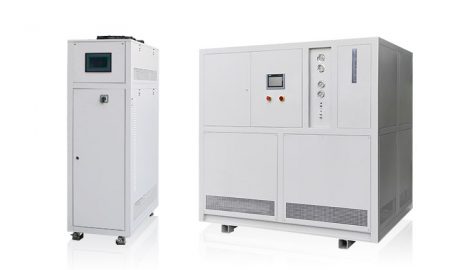
냉각 및 난방 시스템(WTD 시리즈)
- (마이크로 채널/튜브 리액터 전문)
- 온도 범위: -70℃ ~ +300℃
- 고성능 순환 펌프, 보다 안정적인 온도 제어 효과
- 더 많은 산업의 요구를 충족하는 넓은 온도 범위
- 각 장치는 12시간 이상 부하 테스트를 거칩니다.
| 온도 범위 | -70°C ~ +300°C | -45°C ~ +250°C | -70°C ~ +200°C | ||||||
| 냉각 용량 | 1.1 ~ 7.5kW | 1.5 ~ 5.5kW | 11 ~ 50kW | ||||||
| 참고: -150℃ ~ +350℃의 모든 온도 범위와 모든 냉각 용량을 맞춤 설정할 수 있습니다. | |||||||||

냉각 및 난방 서큘레이터
- 온도 범위: -45℃ ~ +250℃
- 에머슨 코플랜드 컴프레서, 신뢰할 수 있는 품질
- 자가 진단 기능, 다중 안전 보호 장치
- 열 유체의 수명을 연장하는 완전 밀폐형 시스템
- 각 장치는 12시간 이상 부하 테스트를 거칩니다.
| 온도 범위 | -25°C ~ +200°C 시리즈 | -45°C ~ +250°C 시리즈 | |||||||
| 냉각 용량 | 1 ~ 15kW | 0.25 ~ 15kW | |||||||
| 참고: -150℃ ~ +350℃의 모든 온도 범위와 모든 냉각 용량을 맞춤 설정할 수 있습니다. | |||||||||
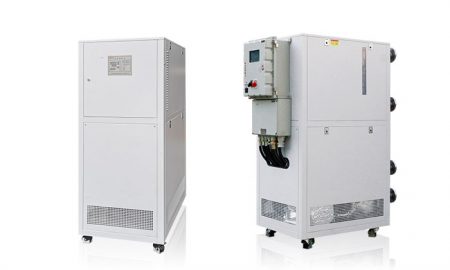
난방 서큘레이터
- 온도 범위: +50℃ ~ +300℃
- 넓은 열교환 면적과 빠른 가열 속도
- 자가 진단 기능, 다중 안전 보호 장치
- 폐쇄형 순환 시스템, 고온에서 오일 미스트 없음
- 각 장치는 12시간 이상 부하 테스트를 거칩니다.
| 온도 범위 | +50°C ~ +170°C(UC 시리즈) | +50°C ~ +300°C(UC 시리즈) | +50°C ~ +300°C(UST 시리즈) | ||||||
| 난방 용량 | 5.5 ~ 15kW | 3.5 ~ 130kW | 3.5 ~ 95kW | ||||||
| 참고: -150℃ ~ +350℃의 모든 온도 범위와 모든 냉각 용량을 맞춤 설정할 수 있습니다. | |||||||||
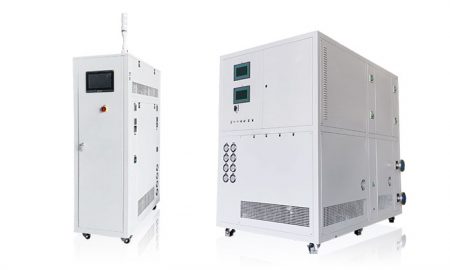
TES 시리즈(연료 및 오일 테스트를 위한 온도 제어)
- 온도 범위: -85℃ ~ +250℃
- 지멘스 PLC 컨트롤러 및 기타 브랜드 액세서리
- 자가 진단 기능, 다중 안전 보호 장치
- 완전 폐쇄형 순환 시스템, 고온에서 오일 미스트 없음
- 각 장치는 12시간 이상 부하 테스트를 거칩니다.
| 온도 범위 | -45°C ~ +250°C 시리즈 | -85°C ~ +200°C 시리즈 | -60°C ~ +200°C 시리즈 | ||||||
| 냉각 용량 | 0.3 ~ 25kW | 0.25 ~ 25kW | 3 ~ 60kW | ||||||
| 참고: -150℃ ~ +350℃의 모든 온도 범위와 모든 냉각 용량을 맞춤 설정할 수 있습니다. | |||||||||
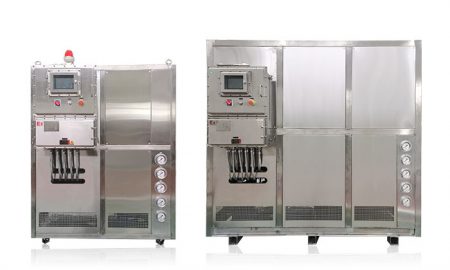
TCU 멀티 리액터 온도 제어 시스템
- 온도 범위: -120℃ ~ +250℃
- 밀폐된 반복 가능한 온도 제어
- 내장형 전기 난방 열유 보조 시스템
- 필요에 따라 냉기 및 열원 열교환 모듈 추가
- 각 장치는 12시간 이상 부하 테스트를 거칩니다.
| 온도 범위 | -45°C ~ +250°C 시리즈 | -120°C ~ +250°C 시리즈 | 맞춤형 온도 제어 시스템 | RT+10°C ~ +135°C | |||||
| 난방 용량 | 25 ~ 80kW | 25 ~ 80kW | 사용자 지정 | 25 ~ 300kW | |||||
| 참고: -150℃ ~ +350℃의 모든 온도 범위와 모든 냉각 용량을 맞춤 설정할 수 있습니다. | |||||||||
 LNEYA
LNEYA
 简体中文
简体中文


















































































